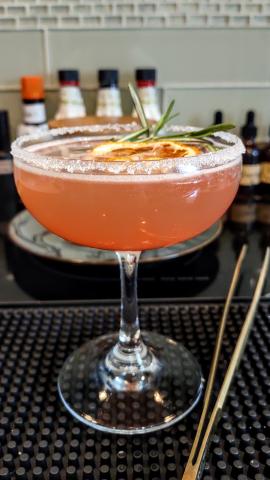Santonioni
Shake, strain, orange twist
Can go a little longer on the syrup to play up the bitter notes or a little shorter to play up the sour. Swap for a lemon twist for more citrus and less floral notes.
- Bees Over the High Seas — Old Tom Gin, Bitters, Herbal liqueur, Lemon juice, Honey syrup
- Starman Sour — Gin, Amaro Nonino, Apricot liqueur, Orange bitters, Lemon juice
- A Study in Pink — Gin, Campari, Apricot liqueur, Orange bitters, Lime juice, Orange peel
- Last Dance — Gin, Bitters, Lime juice, Honey syrup, Brown Sugar Simple syrup, Mint
- Pompelmo Sour — Gin, Amaro Montenegro, Bitters, Lemon juice, Grapefruit oleo-saccharum, Egg white, Grapefruit peel
